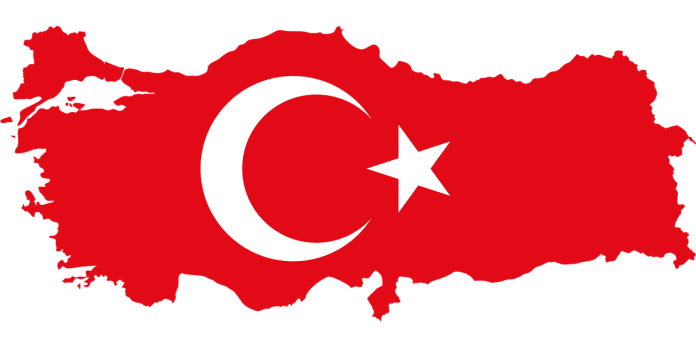Turkey is very famous and one among the pleasant countries in the world. It is located at the crossroads of the Balkans, the Caucasus, the Eastern Mediterranean, and the Middle East, which is a unique place in the world in a geographical way. Furthermore, it is located between Asia and Europe. It connects Europe to Asia, especially in terms of trade. Turkey has played an important role in trade between the two continents from the very beginning. Geographically, Turkey has a way to the ancient continents of the world, including Africa, Asia, and Europe, which is an interesting fact about Geography of Turkey.
Turkey is also one among the massive countries in this region in population and as well as in territory. The land area of Turkey is massive than the state of Europe. Approximately all land area of Turkey is located in Asia, including the oblong peninsula of the Asian continent, which is well-known as Anatolia. As well, the eastern site includes mountain regions, which are famously known as Armenian highlands. Some area of the country of Turkey lies in the extreme southeastern part of Europe, which was once
Some area of the country of Turkey lies in the extreme southeastern part of Europe, which was once a small part of the remnants of an empire that was once spread over much of the Balkans. The Bosphorus and Dardanelles seas separate the Anatolian peninsula from Europe, making it Asia’s westernmost point. There was once also the Thrace region on the European continent, which is now the western part of Turkey.
1. Borders of Turkey with other states
Turkey shares its border with Syria, which is around 877 kilometers long, and with Iraq, it has around 331 kilometers long border to the south. As well as with Iran, it shares an approximately 454-kilometer long border and with Armenia, it shares around 316-kilometer long border.
Furthermore, with Georgia, it has a 276 kilometers-long border to the east or north-east and with Bulgaria, Turkey has a 269 kilometers-long border. Also, Greece, it has a 212 kilometer long border to the northwest. As well as with Romania, Russia, Ukraine, and Cyprus, Turkey shares a total of 5,000 kilometers of sea boundaries. Large Turkish boundaries, which divide the Arab, Persian, Russian, and Turkish governments or cultural zones, have been a source of tension throughout history. Chronic confrontations between both the Ottoman Empire and Persia characterized the 16th century, with neither power making significant adjustments to the borders established by the treaty of Chaldiran during 1514.
2. The Wars Took a Heavy Toll on Geography of Turkey
 The severe fighting between Russia and the Ottomans in the nineteenth century resulted in several changes in boundaries. Particularly following the end of the 1877-1878 battles, and before that the borders were firmly fixed by Moscow’s Treaty. During the breakup of Ottoman Rule and the French and British takeover of the constituent regions of the Ottoman Porte in the wake of World War I in October 1918. Turkey’s boundaries with Syria and Iraq were determined. The Ottoman Army’s withdrawals and gains during the Balkan Wars of 1913 and 1912 set the western frontiers, which were reaffirmed at the Lausanne Conference in 1923. Throughout the 20th century, Turkey’s borders were highly militarized and remain so today.
The severe fighting between Russia and the Ottomans in the nineteenth century resulted in several changes in boundaries. Particularly following the end of the 1877-1878 battles, and before that the borders were firmly fixed by Moscow’s Treaty. During the breakup of Ottoman Rule and the French and British takeover of the constituent regions of the Ottoman Porte in the wake of World War I in October 1918. Turkey’s boundaries with Syria and Iraq were determined. The Ottoman Army’s withdrawals and gains during the Balkan Wars of 1913 and 1912 set the western frontiers, which were reaffirmed at the Lausanne Conference in 1923. Throughout the 20th century, Turkey’s borders were highly militarized and remain so today.
3. Climate and Geography of Turkey
 The Kemalist regime (1923-1945) replaced the city of Istanbul with Ankara city as the capital of Turkey in 1920 and reorganized Turkey into seven regions: the Black Sea Marmara, the Mediterranean, the Aegean, Eastern Anatolia, South-Eastern Anatolia, and Central Anatolia. The provinces of Kirklareli, Tekirdag, and Edirne, and the European side of Istanbul, make up Eastern Thrace, which accounts for only 3% of the country’s total size, or roughly 780,000 kilometers. Outside of Istanbul, the population of Thrace is estimated at 1,521,328 people or about 2.1 percent of the total population. President Erdogan’s government has proposed a third bridge between Europe and Asia, which will be one of the best passages for passage purposes for an average of 2 million people to the region in the future.
The Kemalist regime (1923-1945) replaced the city of Istanbul with Ankara city as the capital of Turkey in 1920 and reorganized Turkey into seven regions: the Black Sea Marmara, the Mediterranean, the Aegean, Eastern Anatolia, South-Eastern Anatolia, and Central Anatolia. The provinces of Kirklareli, Tekirdag, and Edirne, and the European side of Istanbul, make up Eastern Thrace, which accounts for only 3% of the country’s total size, or roughly 780,000 kilometers. Outside of Istanbul, the population of Thrace is estimated at 1,521,328 people or about 2.1 percent of the total population. President Erdogan’s government has proposed a third bridge between Europe and Asia, which will be one of the best passages for passage purposes for an average of 2 million people to the region in the future.
-
Lakes
 Turkey also has some wonderful lakes in Asia. The largest is Lake Van, with an area of about 3,755 square kilometers. The Kizilirmak River, also known as the Red River, has a total length of about 1,150 kilometers. As well as the Yesilirmak River of Turkey, also known as the Green River, is about 520 kilometers long, and the Büyük and Küçük Menderes River systems are about 548 kilometers and 175 kilometers long, respectively. From the Caucasus to Thrace, Geography of Turkey includes coastal areas and Anatolian steppes. This area’s climate has an impact on the climate on the Mediterranean on the coasts of the Aegean and the Mediterranean Sea, which is also, becomes the cause of temperate rain on the coasts of the Black Sea. Turkey’s central area has continental cities and semi-arid areas on the southeast side.
Turkey also has some wonderful lakes in Asia. The largest is Lake Van, with an area of about 3,755 square kilometers. The Kizilirmak River, also known as the Red River, has a total length of about 1,150 kilometers. As well as the Yesilirmak River of Turkey, also known as the Green River, is about 520 kilometers long, and the Büyük and Küçük Menderes River systems are about 548 kilometers and 175 kilometers long, respectively. From the Caucasus to Thrace, Geography of Turkey includes coastal areas and Anatolian steppes. This area’s climate has an impact on the climate on the Mediterranean on the coasts of the Aegean and the Mediterranean Sea, which is also, becomes the cause of temperate rain on the coasts of the Black Sea. Turkey’s central area has continental cities and semi-arid areas on the southeast side.
-
Temperatures
In the summer, maximum temperatures in Istanbul average from 18 °C to 28 °C. Also, in winter, the temperature in the city of Istanbul drops to 5 °C. Ankara’s temperature ranges from 0 °C to 30 °C depending on the season. In Izmir and most of the Mediterranean regions, the average yearly temperature remains consistently high (26 °C). Seasonally, temperatures in Sanliurfa vary between 3 °C to 40 °C. And in Diyarbakir city temperature remains between – 2 °C to around 40 °C. In addition, the temperature in the Turkish city of Erzurum remains between -12 °C and 27 °C every year. Furthermore, Zonguldak city temperature remains 3 °C to 26 °C yearly, which is located at the Black Sea coast.
-
Rainfall
The average annual rainfall in Ankara is between 10 and 50 mm. Turkish cities of Şanlıurfa and Diyarbakir receives 20 to 70 mm of rainfall per year. As well, Erzurum city receives 21 to 70 mm of rainfall a year. In addition, annual rainfall in Istanbul ranges from 21 to 105 mm. And the city of Zonguldak has an annual rainfall of 50 to 140 mm.
4. Best Time to Visit Turkey
 The months of April and May, as well as September and October, are ideal for visiting Turkey. During these months, the climate in Turkey is kind of pleasant. So, you’ll be comfortable enjoying the beauty of towns and outdoor ruins without feeling too hot. As well as it’s a flat season, there will be fewer tourists in Turkey. So, these months of vacation in Turkey will give you an unforgettable time.
The months of April and May, as well as September and October, are ideal for visiting Turkey. During these months, the climate in Turkey is kind of pleasant. So, you’ll be comfortable enjoying the beauty of towns and outdoor ruins without feeling too hot. As well as it’s a flat season, there will be fewer tourists in Turkey. So, these months of vacation in Turkey will give you an unforgettable time.



















